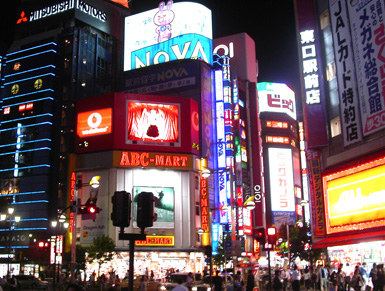Tokyo Exchange
New study abroad program links BU and Keio U

Starting next fall, BU students will be able to spend a semester or an academic year at Keio University in Tokyo, one of Japan’s top private research universities. The new exchange program, which grew out of faculty contacts between the two universities, will be open to both undergraduate and graduate students. The deadline for applications for the 2007–2008 academic year is March 15.
“This is an opportunity for BU students to go and study in one of Japan’s premier universities and to live in Tokyo, a major international city,” says Urbain De Winter, associate provost for international programs. About four or five BU students will be selected to study at Keio, which was founded in 1858, and an equal number of Japanese students will attend BU.
The new exchange opportunity with Keio complements BU’s membership in the Kyoto Consortium for Japanese Studies (KCJS), which BU joined in 1998. Students admitted to KCJS spend a semester or a year in Kyoto studying Japanese language and culture and are required to have completed at least two years of college-level Japanese.
There is no such language prerequisite for the Keio program, which Sarah Frederick, a College of Arts and Sciences assistant professor of Japanese, believes will help the program draw from a more diverse group of students, those who “are very interested in going to Japan but come to that interest later in their studies,” she says.
Each year 500 to 700 BU students take Japanese language and literature courses, according to Frederick. Japanese is the fourth most popular language here, after Spanish, French, and Italian. While BU students studying at Keio will be expected to take at least one Japanese language course a semester, the heart of the program will be courses taught in English through Keio’s Center for Japanese Study, on subjects such as Japanese business, literature, art, religion, diplomacy, and technology.
Students studying in Kyoto stay with host families, but those who travel to Keio will live in either dormitories or apartments in Tokyo.
“It will be a much different, more urban experience,” says Frederick. This urban setting makes Keio and BU a good match. “Boston is particularly attractive to Japanese students as an intellectual center,” says De Winter. “I think we’ll see Keio students from a broad spectrum of fields.”
There will also be what De Winter calls a framework established for discussions between BU and Keio faculty “to explore areas of mutual interest.” Indeed, the student exchange program itself emerged from a collaboration between Steven Rosenberg, a CAS professor of mathematics and statistics, and Yoshiaki Maeda, a mathematics professor at Keio. In 2002, Maeda suggested a formal agreement of cooperation between the two universities, which grew into a full-fledged student exchange, made official in fall 2006 during visits to BU by Yuichiro Anzai, Keio University’s president, and Tatsuya Sakamoto, Keio’s vice president of international collaboration.
Keio has one of the largest international exchange programs in Asia, De Winter notes, with more than 150 student exchange partnerships around the world, including more than 40 in the United States. “They very much encourage their students to spend a year abroad,” he says.
As does BU, says University Provost David Campbell, who spent a week at Keio as a Toshiba Visiting Professor in 1994. “We currently send 40 percent of our student body overseas for a portion of their studies,” he says. “My target would be for almost all of our students to have a significant international experience while they’re here. We live in a global world.”
Chris Berdik can be reached at cberdik@bu.edu.